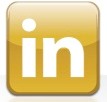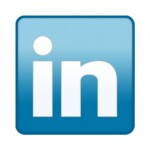A scant 12 days ago, LinkedIn went public. Its shares opened at $80, peaked at $115 later that day, and currently sit around $88. An initial public offering is always cause to celebrate, particularly in this, the much-ballyhooed case of Facebook’s uptight older sibling who wears golf shirts on weekends and enjoys Steely Dan.
(Part of our resistance to media bombast is waiting for things to settle. Everyone wrote about LinkedIn the day it debuted. Our contrarian nature requires us to wait a few days, and approach things with less emotion and more rationality.)
Given the number of shares LinkedIn is issuing, that makes the company worth up to $8.7 billion. It’s not IBM, but it’s not the neighborhood taqueria either. And as of two Thursdays ago, you too can own a piece of…well, of what?
Never mind. It’s an IPO! Get on board before it’s too late! This is where millionaires are made!
When Union Pacific went public, it didn’t lead the business news. (Then again, it was 1897. The only things most Americans were investing in were feed and tack.) Same deal with Southwest Airlines, decades later. Only in today’s exciting, futuristic Business 2.0/e-commerce/new economy do IPOs come with a ruffle and a flourish.
But why?
People like hype.
Look, the Control Your Cash principals both have LinkedIn accounts. We even update them semi-regularly. It’s fun to enter the name of someone you just met or don’t know and find that you either share an acquaintance or are 1 or 2 degrees removed from doing so.
What about LinkedIn’s intended purpose? Does anyone hire someone based on a LinkedIn profile? Let us know if you indeed got a job or got an employee that way. If an applicant maintains a LinkedIn profile, it tells an employer one thing: this person knows how to navigate the one social media site that doesn’t let you post embarrassing photos and incriminating comments.
LinkedIn won’t change the world. It’s been around for 8 years and would have started doing so by now. We’re not saying it’s a bad service. We use it often enough to wonder how it generated $161.4 million in revenue last year.
For us, once we’d set up our LinkedIn accounts, they served primarily as a way of updating the more shadowed corners of our email contact lists without us having to do the work ourselves. The thought sequence goes like this: “Oh yeah, Person X, whom I haven’t thought about in 4 years. I wonder if she’s still at Company Y?” If Person X updates her profile – which most users don’t seem to – we can find her new workplace without asking her directly and running the risk of a drawn-out conversation.
Is that revolutionary? Is it even necessary? Is the likelihood of building a business relationship with someone you barely keep in contact with – or with that person’s contacts, or those contacts’ contacts – worth $85 on average? (That’s the share price divided by the number of users.)
If you want to collect contacts, LinkedIn doesn’t seem to offer anything that Facebook doesn’t. Sure, the former looks more businesslike and is less detailed. But if you’re looking for information about a contact or potential contact, wouldn’t you want the opposite?
LinkedIn was forthright in the S-1 filing it was required to submit to the Securities & Exchange Commission before trading. That filing tells us how many members LinkedIn has and how they’re broken down by country. But here’s what we’d really like to know:
How many LinkedIn members have so much spare cash lying around that they’re willing to pay at least $240 a year to use its premium service? LinkedIn doesn’t run ads, making this its only stream of revenue.
LinkedIn Premium comes in three tiers: $240, $480 or $900 annually ($300, $600, or $1200 respectively if you pay by the month.)
For this you can find out who perved your profile, save profiles in folders, and let people contact you without knowing you. That last feature is something we’d pay to avoid, but whatever.
Plus with a premium membership you get a SPECIAL GOLD BADGE on your profile, instead of a blue one.
Seriously, they consider that a selling point.
Facebook is free, right?
Sure, $900 is far less than a headhunter charges. But again – what legitimate business decisionmaker uses LinkedIn to supplant headhunting? That’s not a rhetorical question.
——-
Are all IPOs a rip? No, but most are. Think about it: you’re buying what’s supposed to be an asset – a tiny fraction of a business – at the time when that business is making a point of availing itself to as many potential investors as possible. When increasing demand chases a finite supply, what happens to prices? Yes, they rise.
Of course, LinkedIn’s share price could ultimately rise in the longer term because the service itself will turn out to be not only good, but significantly better than it was when LinkedIn was a private company.
How likely is that?
The LinkedIn IPO runs counter to everything we preach in our obscenely cheap new ebook, The Unglamorous Secret To Riches. We tell you to look at a company’s financial statements to find value. LinkedIn, seeing as it’s a brand new public company, has no usable financial statements to speak of. It only has this, which is the letter “B” in International Signal Code.
(Only the sailors in the audience will get that.)
Everyone – landlubber and yachtsman, rookie investor and veteran – can get something of value from our $3.50 ebook (free, if you buy it with our big book.) Pick up The Unglamorous Secret to Riches, put easily readable advice into practice today, and invest in something of substance. While avoiding the noisy glitz of well-publicized IPOs.
**This article is featured in the Carnival of Personal Finance Summer Edition**





